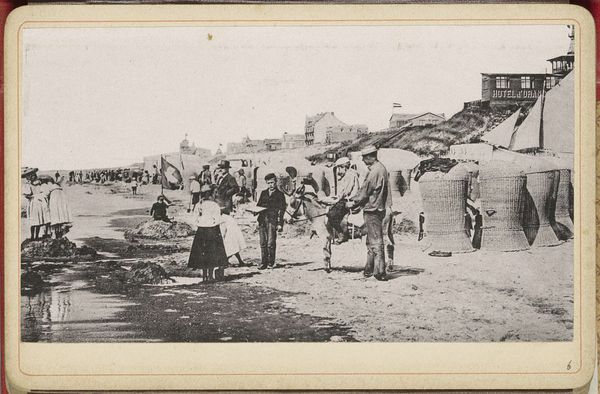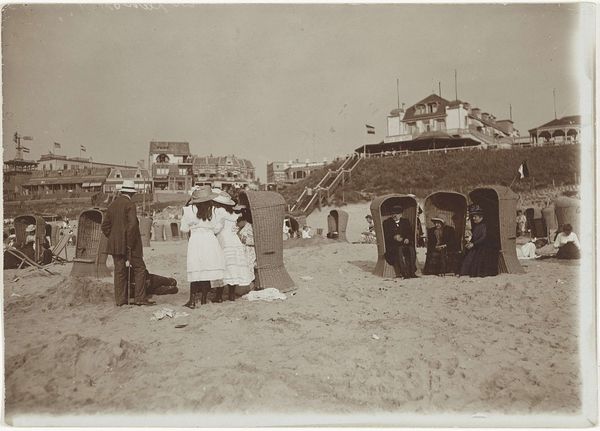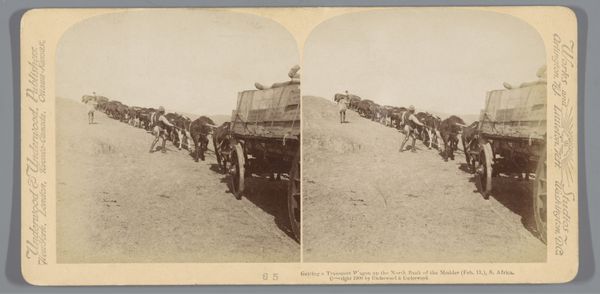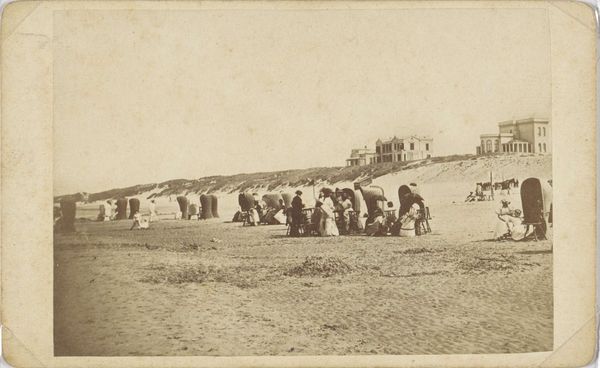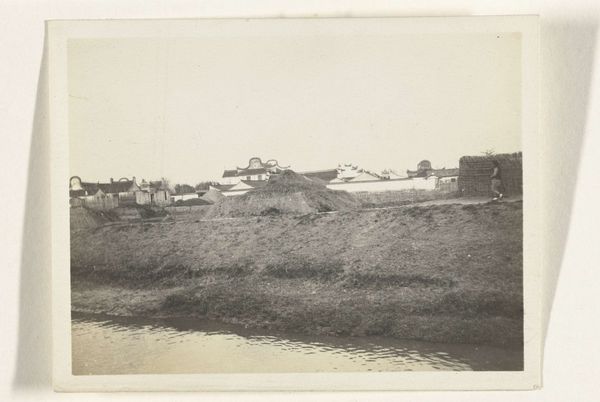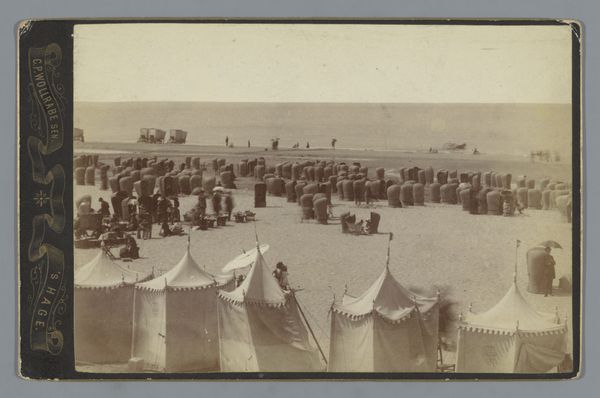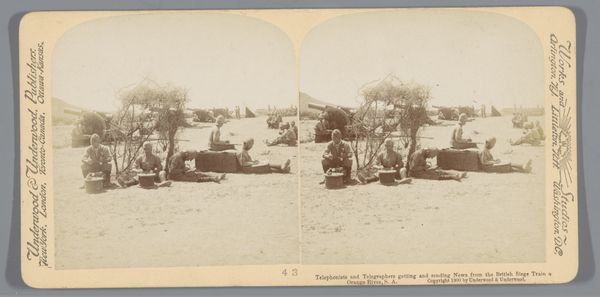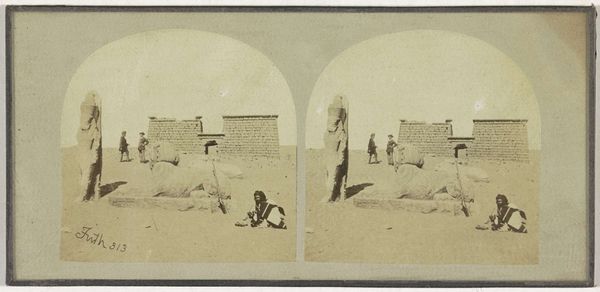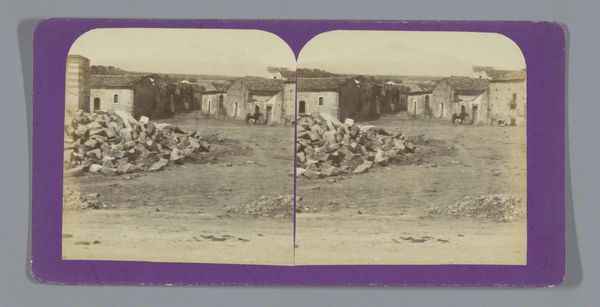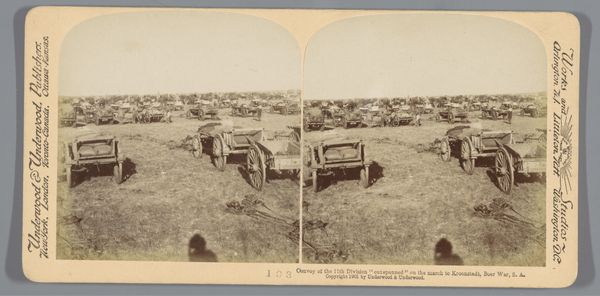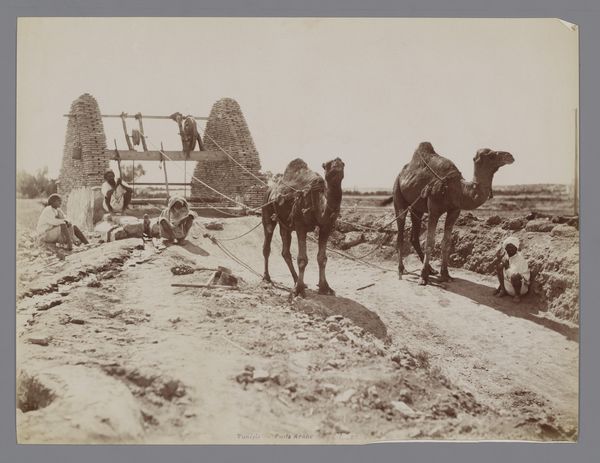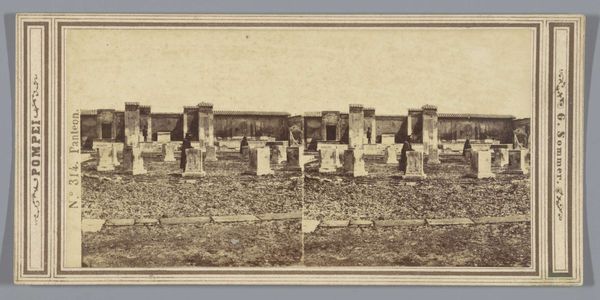
J.B.A. Kessler en zijn kinderen op het strand in Domburg 1899
0:00
0:00
Dimensions: height 78 mm, width 163 mm
Copyright: Rijks Museum: Open Domain
Curator: This gelatin silver print from 1899, titled "J.B.A. Kessler en zijn kinderen op het strand in Domburg," captures Jean Baptiste August Kessler and his family enjoying a day at the beach. The photograph resides here at the Rijksmuseum. Editor: My first impression is a muted, somewhat melancholic stillness, even with the children playing. It's the kind of scene where the sand feels gritty and the wind is constant, almost like you can feel it even looking at the print. Curator: That sense of place, that physical awareness, is exactly what beach resorts like Domburg cultivated at the turn of the century. It became a space of recreation and self-display for the burgeoning bourgeoisie, eager to partake in the "healthy" properties of the sea. Editor: You can definitely see the trappings of wealth here. Look at those bathing machines lined up. Even their beach outings were mediated through these very structured, manufactured elements. The labor involved in hauling those things around must have been significant, not to mention the initial crafting of those striped huts! Curator: Precisely. Domburg, and locations like it, were sites of elaborate social rituals. The beach was almost like a stage where individuals enacted leisure in a very prescribed manner. Even Kessler himself, an important business man, is present within this play. Editor: And the photographic process itself is another layer of labor. Creating a gelatin silver print at that time wasn't exactly point-and-shoot. The chemistry involved, the time investment – it highlights the act of capturing this scene as a deliberate undertaking. I imagine they made copies of this, to send to relatives, something of that kind. Curator: Undoubtly, they intended it as a tool for constructing and reinforcing a family and social identity. The photograph helped to advertise leisure. Notice how their attire mirrors codes for beach culture in general, and reinforces status and cultural belonging. Editor: It’s interesting to consider this image within the context of materiality; that turn-of-the-century urge to grasp leisure activities using tools and items reflects how important and new the concept of free time was for a few selected people. Curator: Reflecting on it now, it becomes a social commentary – both intimate and strangely removed given the context of a beach where people sought to escape constraints. Editor: Yes, it invites questions regarding process, labour, and class. An evocative scene for analysis from many different points of view.
Comments
No comments
Be the first to comment and join the conversation on the ultimate creative platform.
